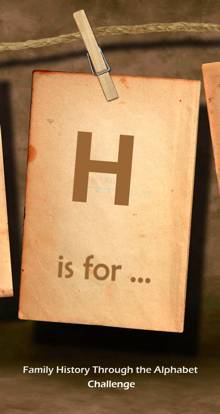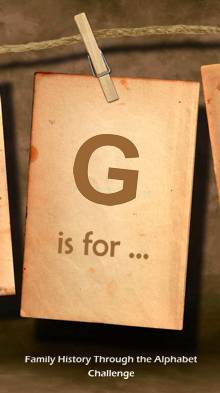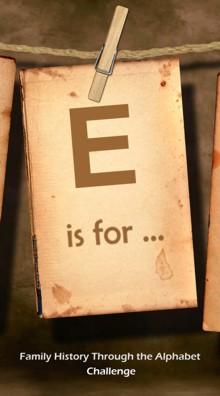"Ag Lab"
How many people have an "Ag Lab" as an ancestor? I have many.
My Great Great Grandfather, James Pilgrim, was so much more than a farmer. James was a visionary, an achiever and a leader. He wanted to make a difference. He was also stubborn and determined, which is reflected in a letter from home (Earls Colne, England) which states
"but of course James will please himself". Maybe that's where I inherited my stubbornness and determination from?
 |
James Pilgrim
1836 - 1929 |
The title of this blog site "Strong Foundations" was inspired by James, who left school at a relatively young age and was apprenticed to the trade of stonemason, but after meeting with an accident and seriously injuring his foot, he took to gardening and farming. In 1858 at age 22, James embarked on the long journey to Australia aboard the
Lady Milton.
It is extremely difficult to summarise James' many achievements as he was actively involved in so many endeavours and community initiatives over his lifetime. This prominence has made it easier to build a really good sense of his strong minded, generous and pioneering character as there were regular reports in local papers about his influence within the community, his charitable and helpful nature and his farming successes.
Before I get to James's farming and fertiliser achievements I must also share that James was a very religious man with very strong beliefs. His granddaughter wrote, “He
was very religious – no work on Sunday except the very necessary. The cows were milked and the calves got
milk. Also no rowdy games. Dad said
cricket was often played behind the stables and some one keeping nit.”
Many of the letters written from England also included a reference to religion and made me very aware of how difficult it must have been for a mother to be separated from her children; "I hope the Lord will have mercy on you and I hope you will think of him. I hope
that if we do not see each other in this world I hope we shall meet in heaven
that will be joyful if we can do that and I hope the Lord will have mercy on us
all and pardon our sins before he calls us hence which he will if we look up to
him the right way”.
 |
| The first record and indication of James' leadership |
In 1878, the Crown was releasing additional land and had eased the rules
for selectors with lease periods being doubled and rents halved. This is likely what attracted James to Winiam in Victoria (from South Australia) and he is listed as one of the early selectors to move into the
district, first selecting land in 1881.
During the first year, James built a five room house of pug and timber
with an iron roof, at a cost of £50.
Together with his growing family, he initially cleared and cropped five
acres by hand. He then used a team of
bullocks and continued to clear more land each year until he was cropping 250
acres in 1888 with an average yield of wheat of 12 bushels to the acre.
The same year, Alexander Sutherland wrote about “the people of Victoria who are making a difference” in the book Victoria and its Metropolis. James Pilgrim is mentioned and it is stated that he “has one of the nicest gardens in the Wimmera, fruit trees, grape vines and flowers growing luxuriantly”.
 |
| James Pilgrim's farm and orchard, Winiam |
 |
| James Pilgrim's Garden, Winiam |
James lost stock, feed and sheds in a fire, which was allegedly caused by his children playing with matches. He also lost sheep due to "sand disease" and his wheat crops had failed due to drought and continuous cropping. By 1895, he was having financial difficulties. He was paying 3% interest on a £512 unregistered mortgage for both his and his daughter Emma’s selections. He also had other debts totaling £50.
 |
| 1900 |
However being such a determined person, James looked to alternatives to improve his farming fortunes. When Dr. Howell, a chemist from the Victorian Agricultural Society visited Nhill, James was initially sceptical about his ideas.
“When
Dr Howell gave his first lecture in Nhill, a few years ago, a neighbour of mine
said to me when we came out ‘Well what do you think of that chap’s idea?’ ‘I
don’t know.’ I replied. ‘It does seem stretching it a bit to say that 50lb of
superphosphate spread over an acre would do any good. Why, you couldn’t even see any trace of it;
but I’ll give it a trial’ I did so, and so did some of my neighbours. We all believe in it now.”
James worked with the Victoria Agricultural Society to test the impact of manure, superphosphate, crop rotations and tillage methods on 12 acres of his land over 6 - 7 years.
In 1904 the Argus reports "Two acres are devoted to summer fodder crops, and the rest to wheat experiments. There are wheat plots on stubble, on fallowed, and on sub-soiled land: some unmanured, some manured lightly, and others again more heavily; some horse-hoed during the growing period, and some left untouched. The plots run side by side and were drilled in on the same day, and with the same variety of wheat. When harvested the yield of each plot will be weighed, and duly recorded, and the work continued over a series of years. But there is no need even to wait for the harvest to learn the striking lessons this living book of nature has to unfold."
The experimental plots were very successful and James increased his yield to 24 bushels of wheat to the acre. Many of the techniques trialed are routine procedure now, however at the time James's experimental plots were considered innovative and assisted improve and change the future of farming.
+-+(Agricultural)+Conference+at+Noradguha+2.jpg) |
James Pilgrim is seated in the middle
row on the far left at the Agricultural Conference at Noradjuha
|
In recognition of his farming services James Pilgrim was made a life member of the Nhill Agricultural society – a distinction conferred on no other member at the time of his death. He officiated as judge for the Nhill show for
years, and for 45 years did not miss attending once. In addition to his farming pursuits and awards, James Pilgrim was very involved in all aspects of the community. He was known
affectionately as “Grandfather Pilgrim”
throughout the Winiam, Winiam East, Nhill and Kinimakatka area. He was well known for his generosity and
willingness to assist the community and his neighbours however he could.
“His bright, cheery, optimistic
disposition made him popular with all sections of the community, which regret
the loss of a sterling upright citizen”
Nhill Free Press 30 May
1929
 |
| Click on the picture for more posts |










+Almond+Dale.jpg)










.jpg)







+2.jpg)










+-+(Agricultural)+Conference+at+Noradguha+2.jpg)








